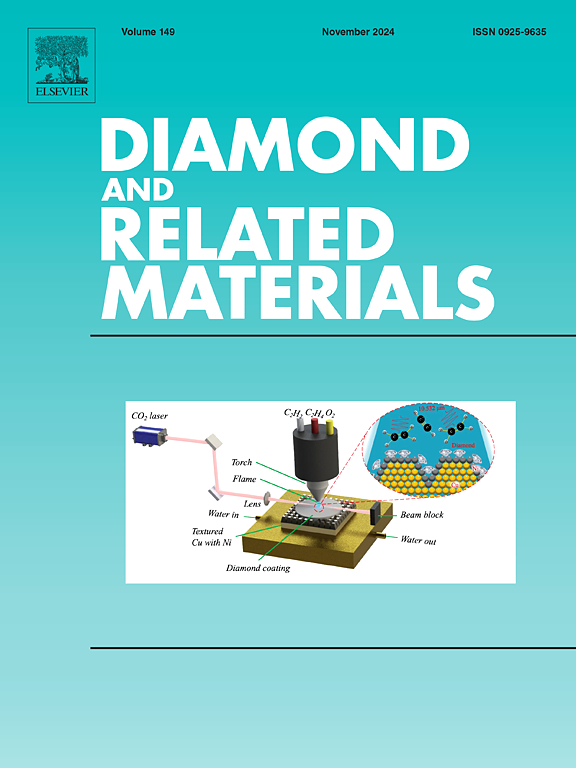碳纳米管含量对激光熔覆WC/ co基合金组织和性能的影响
IF 5.1
3区 材料科学
Q2 MATERIALS SCIENCE, COATINGS & FILMS
引用次数: 0
摘要
碳纳米管一直被认为是增强陶瓷和金属基复合材料涂层的理想材料。为了提高WC/ co基涂层的力学性能,采用激光熔覆的方法制备了碳纳米管增强co基碳化钨复合涂层。研究了碳纳米管含量的影响,并与不含碳纳米管的复合材料样品进行了比较。结果表明:复合涂层的主要相组成为M23C6、M7C3、Cr2Fe14C、W2C和M12C;添加碳纳米管的涂层晶粒细化效果明显,平均晶粒尺寸比未添加碳纳米管的涂层小得多。随着CNTs含量的增加,涂层的显微硬度和耐磨性先升高后降低。当CNTs含量为1 wt%时,涂层的平均硬度达到507 HV0.2,平均摩擦系数降至0.32。随着CNTs含量的增加,涂层的耐蚀性先升高后降低。当CNTs含量为1 wt%时,镀层的腐蚀电位最高(Ecorr)为- 0.271 V,腐蚀电流密度最低(Icorr)为4.603 × 10−8 A·cm−2,耐蚀性能最佳。本文章由计算机程序翻译,如有差异,请以英文原文为准。

Effect of carbon nanotube content on the microstructure and properties of WC/ Co-based alloy by laser cladding
Carbon nanotubes (CNTs) have long been considered as ideal materials for reinforcing ceramic and metal matrix composite coatings. To improve the mechanical properties of WC/ Co-based coatings, a laser cladding method was employed to prepare CNTs-reinforced Co-based tungsten carbide (WC) composite coatings. The effect of CNTs content is investigated and compared to that of a CNTs-free composite sample. The results show that: the main phase composition of the composite coating is M23C6, M7C3, Cr2Fe14C, W2C and M12C. The grain refinement effect of the coating with carbon nanotubes is obvious, and the average grain size is much reduced compared to the coating without carbon nanotubes. The microhardness and wear resistance of the coating increase first and then decrease with the increase of CNTs content. When the CNTs content is 1 wt%, the average hardness of the coating reaches 507 HV0.2 and the average friction coefficient decreases to 0.32. The corrosion resistance of the coating increases first and then decreases with the increase of CNTs. When the CNTs content is 1 wt%, the coating has the highest corrosion potential (Ecorr) of −0.271 V, the lowest corrosion current density (Icorr) of 4.603 × 10−8 A·cm−2, and the best corrosion resistance.
求助全文
通过发布文献求助,成功后即可免费获取论文全文。
去求助
来源期刊

Diamond and Related Materials
工程技术-材料科学:综合
CiteScore
6.00
自引率
14.60%
发文量
702
审稿时长
2.1 months
期刊介绍:
DRM is a leading international journal that publishes new fundamental and applied research on all forms of diamond, the integration of diamond with other advanced materials and development of technologies exploiting diamond. The synthesis, characterization and processing of single crystal diamond, polycrystalline films, nanodiamond powders and heterostructures with other advanced materials are encouraged topics for technical and review articles. In addition to diamond, the journal publishes manuscripts on the synthesis, characterization and application of other related materials including diamond-like carbons, carbon nanotubes, graphene, and boron and carbon nitrides. Articles are sought on the chemical functionalization of diamond and related materials as well as their use in electrochemistry, energy storage and conversion, chemical and biological sensing, imaging, thermal management, photonic and quantum applications, electron emission and electronic devices.
The International Conference on Diamond and Carbon Materials has evolved into the largest and most well attended forum in the field of diamond, providing a forum to showcase the latest results in the science and technology of diamond and other carbon materials such as carbon nanotubes, graphene, and diamond-like carbon. Run annually in association with Diamond and Related Materials the conference provides junior and established researchers the opportunity to exchange the latest results ranging from fundamental physical and chemical concepts to applied research focusing on the next generation carbon-based devices.
 求助内容:
求助内容: 应助结果提醒方式:
应助结果提醒方式:


